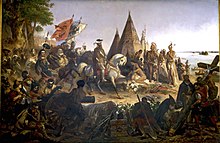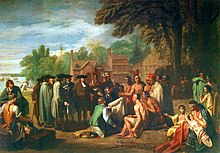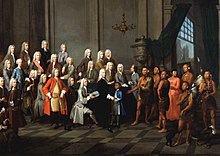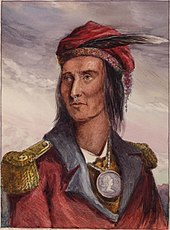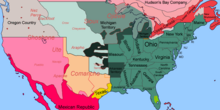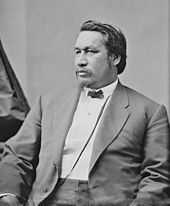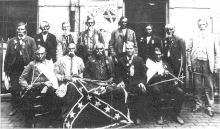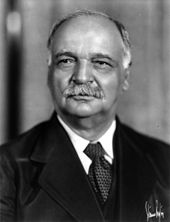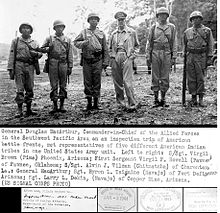History of Native Americans in the United States
The Eurasian migration to the Americas occurred over millennia via Beringia, a land bridge between Siberia and Alaska, as early humans spread southward and eastward, forming distinct cultures and societies.
Major Paleo-Indian cultures included the Clovis and Folsom traditions, identified through unique spear points and large-game hunting methods, especially during the Lithic stage.
By the 19th century, westward U.S. expansion, rationalized by Manifest destiny, pressured tribes into forced relocations like the Trail of Tears, which decimated communities and redefined Native territories.
Landmark legislation like the Indian Self-Determination and Education Assistance Act of 1975 recognized tribal autonomy, leading to the establishment of Native-run schools and economic initiatives.
By the 21st century, Native Americans had achieved increased control over tribal lands and resources, although many communities continue to grapple with the legacy of displacement and economic challenges.
[1] Falling sea levels associated with an intensive period of Quaternary glaciation created the Bering land bridge that joined Siberia to Alaska about 60–25,000 years ago.
Three major migrations occurred, as traced by linguistic and genetic data; the early Paleoamericans soon spread throughout the Americas, diversifying into many hundreds of culturally distinct nations and tribes.
[8] A study published in 2012 gives genetic backing to the 1986 theory put forward by linguist Joseph Greenberg that the Americas must have been populated in three waves, based on language differences.
Since the 1990s, archeologists have explored and dated eleven Middle Archaic sites in present-day Louisiana and Florida at which early cultures built complexes with multiple earthwork mounds; they were societies of hunter-gatherers rather than the settled agriculturalists believed necessary according to the theory of Neolithic Revolution to sustain such large villages over long periods.
They were part of the Southwestern Archaic tradition centered in north-central New Mexico, the San Juan Basin, the Rio Grande Valley, southern Colorado, and southeastern Utah.
The Ancestral Puebloan culture covered present-day Four Corners region of the United States, comprising southern Utah, northern Arizona, northwestern New Mexico, and southwestern Colorado.
From the 18th through the 19th centuries, the population of Native Americans declined in the following ways: epidemic diseases brought from Europe; violence and warfare, such as the Indian Wars[30] at the hands of European explorers and colonists; displacement from their lands including forced marches such as the Trail of Tears resulted in many deaths as did enslavement; continued tribal internal warfare;[31] and a high rate of intermarriage also led to a reduction in the numbers of Native Americans.
[34][35][36] With the rapid declines of some populations and continuing rivalries among their nations, Native Americans sometimes re-organized to form new cultural groups, such as the Seminoles of Florida in the 19th century and the Mission Indians of Alta California.
[37][40][41] Historian David Henige criticized higher estimates such as those of Dobyns', writing that many population figures are the result of arbitrary formulas selectively applied to numbers from unreliable historical sources.
[44][45] One element of the Columbian exchange suggests explorers from the Christopher Columbus expedition contracted syphilis from indigenous peoples and carried it back to Europe, where it spread widely.
[46] Other researchers believe that the disease existed in Europe and Asia before Columbus and his men returned from exposure to indigenous peoples of the Americas, but that they brought back a more virulent form.
[citation needed] Native Americans benefited from the reintroduction of horses, as they adopted the use of the animals, they began to change their cultures in substantial ways, especially by extending their nomadic ranges for hunting.
[citation needed] According to a combined estimate of loss of life in Schultz and Tougias' King Philip's War, The History and Legacy of America's Forgotten Conflict (based on sources from the Department of Defense, the Bureau of Census, and the work of Colonial historian Francis Jennings), 800 out of 52,000 English colonists of New England (1 out of every 65) and 3,000 out of 20,000 natives (3 out of every 20) lost their lives due to the war, which makes it proportionately one of the bloodiest and costliest in the history of America.
Both sides committed numerous atrocities and destroyed villages and food supplies to reduce the ability of people to fight, as in frequent raids in the Mohawk Valley and central New York.
The Indians presented a reverse image of European civilization, which helped America establish a national identity that was neither savage nor civilized.The United States was eager to expand, to develop farming and settlements in new areas, and to satisfy land hunger of settlers from New England and new immigrants.
[60] During this time, what came to be called The Northwest Indian War also began, led by the Native nations of the Ohio country trying to repulse American settlers and halt the seizure of land by the Continental Congress.
[81] How different would be the sensation of a philosophic mind to reflect that instead of exterminating a part of the human race by our modes of population that we had persevered through all difficulties and at last had imparted our Knowledge of cultivating and the arts, to the Aboriginals of the Country by which the source of future life and happiness had been preserved and extended.
The actual number of killed and wounded Indians must be very much higher than the given... Fifty percent additional would be a safe estimate..."[89] In July 1845, the New York newspaper editor John L. O’Sullivan coined the phrase, "Manifest Destiny," as the "design of Providence" supporting the territorial expansion of the United States.
No prophecy, however seemingly extravagant, as to future achievements in this way [is] likely to equal the reality.In 1851, delegates from the federal government and upwards of ten thousand Indigenous peoples, consisting of various Plains tribes including the Sioux, Cheyenne and Crow among many others, assembled.
[58] Conflicts between the U.S. Army, settlers and Native Americans continued; however, in 1864 after the massacre of a Cheyenne village along the banks of Sand Cheek, war between the U.S. and the tribes of the Great Plains was inevitable.
[95] The age of manifest destiny, which came to be associated with extinguishing American Indian territorial claims and moving them to reservations, gained ground as the United States population explored and settled west of the Mississippi River.
Senator Jacob Howard of Michigan commented, “I am not yet prepared to pass a sweeping act of naturalization by which all the Indian savages, wild or tame, belonging to a tribal relation, are to become my fellow-citizens and go to the polls and vote with me".
"The war", said the U.S. Indian Commissioner in 1945, "caused the greatest disruption of Native life since the beginning of the reservation era", affecting the habits, views, and economic well-being of tribal members.
[132]After years of investigation and independent work by Native American journalists, in 2003 the U.S. government indicted suspects in the December 1975 murder of Anna Mae Aquash at the Pine Ridge Indian Reservation.
A number of longstanding cases were finally settled by the administration of President Barack Obama, who made a commitment to improve relations between the federal government and the tribes.








